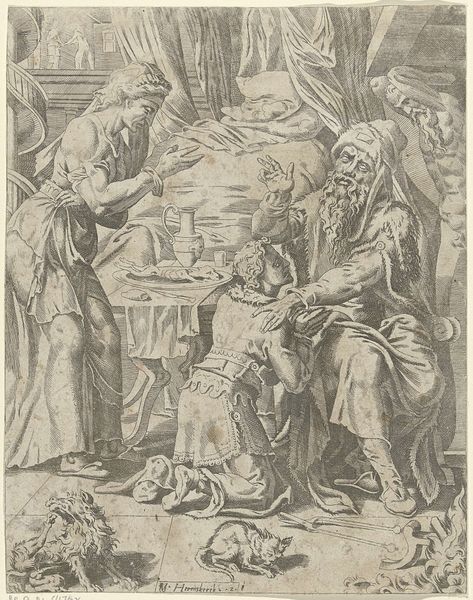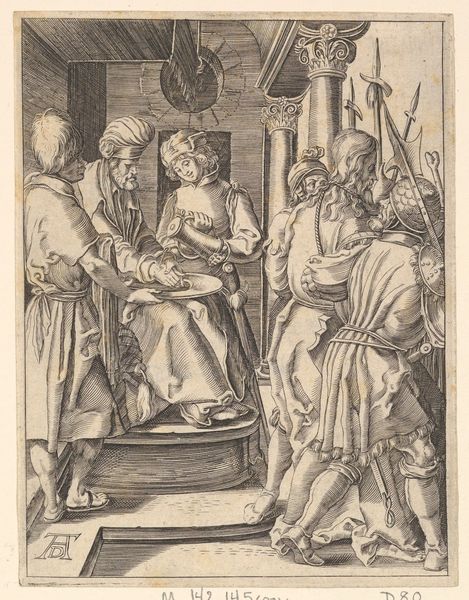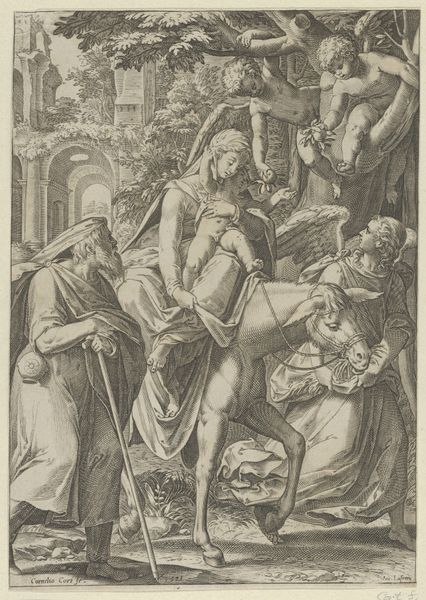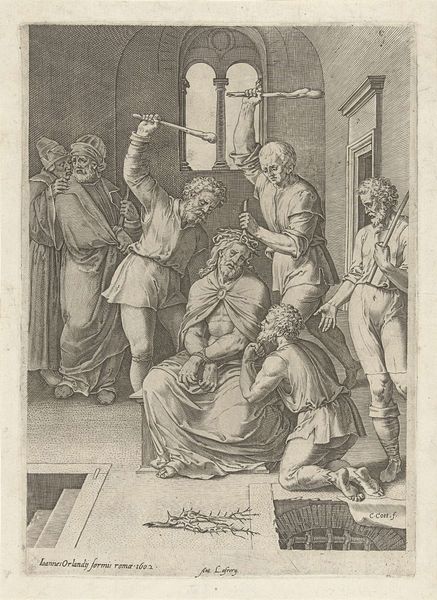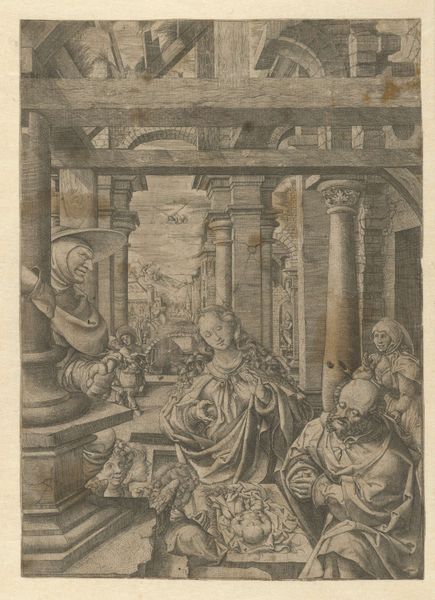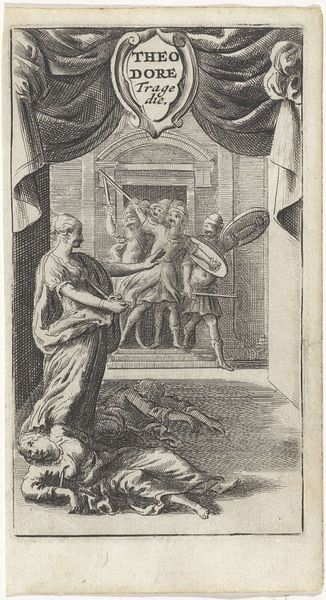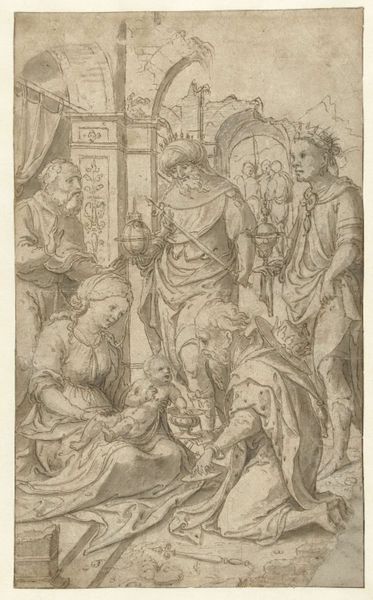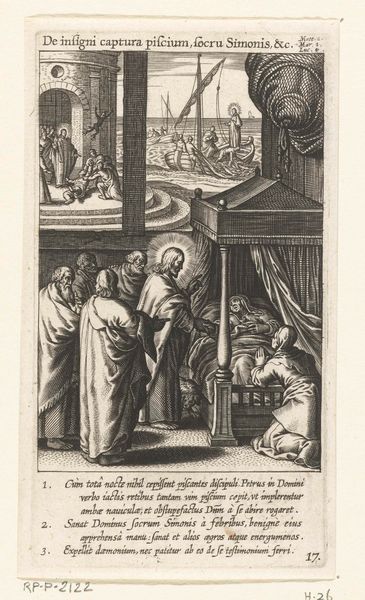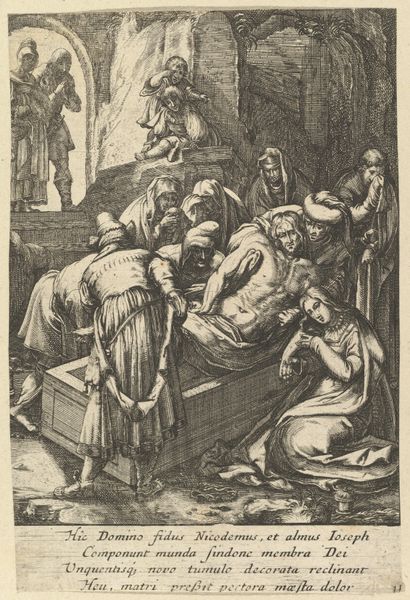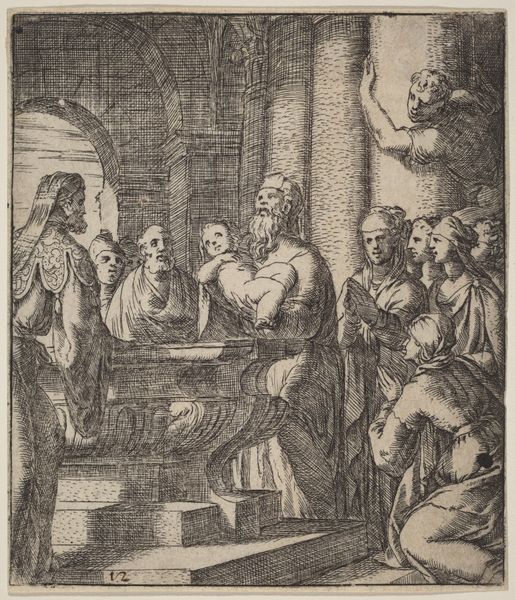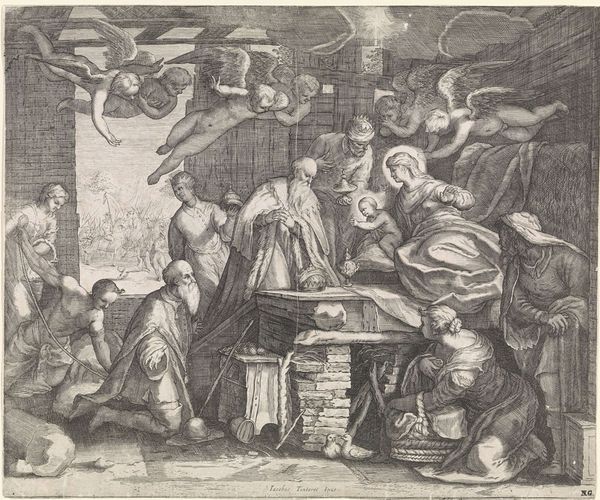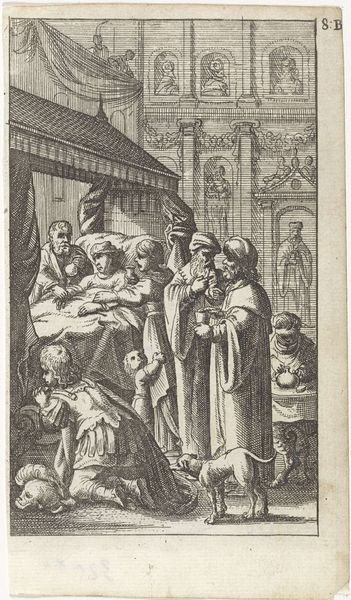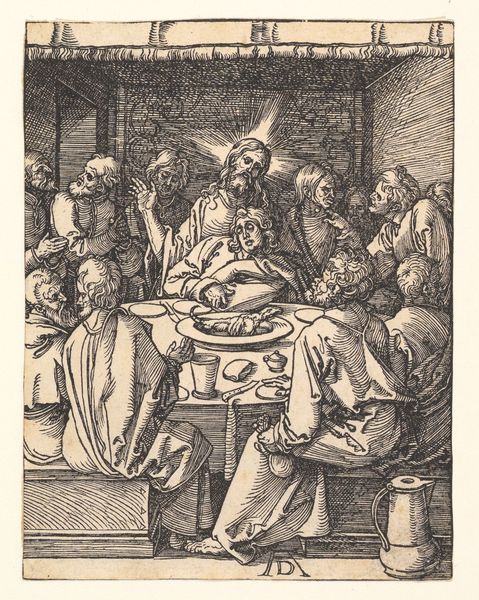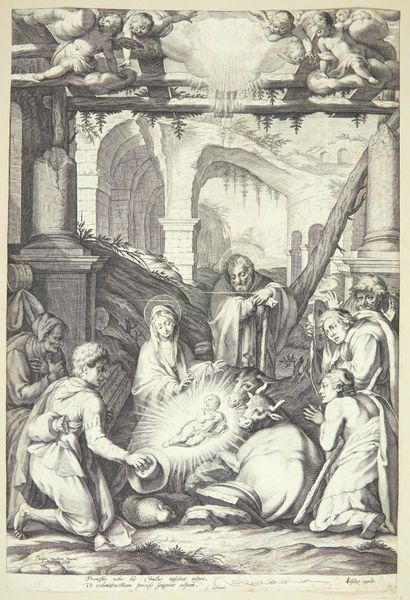
print, engraving
#
pencil drawn
#
toned paper
#
light pencil work
#
baroque
# print
#
pencil sketch
#
sketch book
#
figuration
#
personal sketchbook
#
pen-ink sketch
#
line
#
sketchbook drawing
#
pencil work
#
history-painting
#
sketchbook art
#
engraving
Dimensions: height 238 mm, width 198 mm
Copyright: Rijks Museum: Open Domain
Curator: Welcome. We are standing before “Besnijdenis van Christus,” or “The Circumcision of Christ,” an engraving likely completed between 1584 and 1623 by Francesco Brizio. Editor: Whoa. Okay, right off the bat, I get this sort of shadowy, old-book-smell vibe, you know? The lines are so delicate, like whispers from another century. And the scale is...intimate? Not grand and imposing like some religious art. Curator: Yes, that's interesting. It’s an engraving, so consider the context. Brizio, as a late Mannerist/early Baroque artist, grappled with the Counter-Reformation's demands for clarity and emotional resonance. Think about the historical context of religious upheaval in Europe; this piece serves as a visual theology that aims to make dogma more personal. Editor: Personal, right. It works. My eye keeps jumping to the expressions on the faces. Especially that woman on the left – she’s radiating concern, maybe grief. What’s her deal? Curator: The emotional tenor of this work underscores complex issues. The faces speak to the intersectional suffering inherent in religious law. The figure you noted, is likely Mary. It highlights the roles, both forced and chosen, that are a product of the period's gender politics, reflecting the ways motherhood intersects with religious authority. Editor: It feels like a tight, tense moment captured forever. Curator: Indeed. Now consider where he’s placed the architecture. How does the symbolism here intersect with contemporary discussions of religious authority? What does this choice signify, culturally, historically, or politically? Editor: It's as though it’s boxed them in… making the ceremony itself almost clandestine. The setting, the lines, it's not a celebration as much as... a duty? Or maybe even a burden. Curator: An astute interpretation. Consider this in relation to ongoing societal dialogues about religious obligations and power. I find it rather unsettling that Brizio compels viewers to question assumptions concerning faith, tradition, and cultural continuity through what appears to be an orthodox approach. Editor: Yeah, "unsettling" is spot-on. I came in thinking, "old religious art, yawn," but there's something raw here, you know? It sticks with you. Curator: Precisely. That speaks to Brizio’s success in prompting contemplation about this symbolic, highly charged event. It gives you, in a way, access into how shifting socio-religious dynamics may affect lived realities across centuries.
Comments
No comments
Be the first to comment and join the conversation on the ultimate creative platform.
